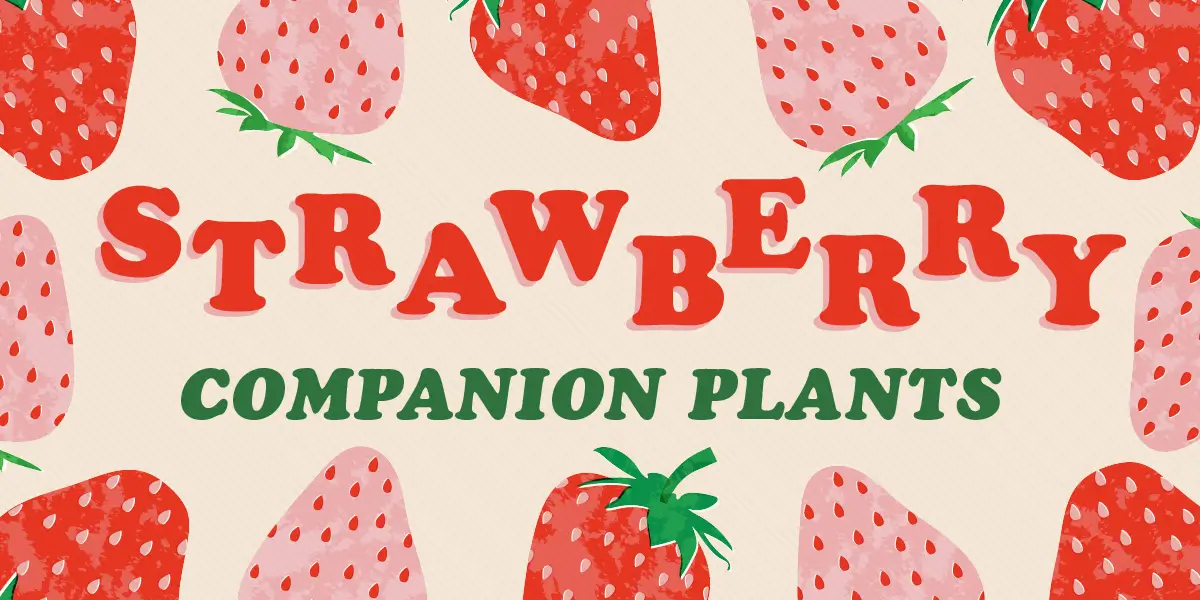The Los Angeles Basin was once a prime farming area for oranges, grapefruit, lemons, and — yes — strawberries.
Fertile soil and benign weather meant that almost anything could grow here.
The sprawling fields are long gone, but strawberries remain a favorite among Southern California gardeners.
Strawberry plants can live for 3-5 years, depending on the variety and growing conditions. With proper care, they’ll yield a bounty of succulent fruit year after year, especially with a boost from companion planting.
Fun fact: California leads all US states in strawberry production, contributing about 90% of strawberries nationwide.
What Is Companion Planting?
Companion planting involves growing different plants together for mutual benefit.
This time-tested technique pairs plants with complementary qualities to help each other flourish.
For instance, some companion plants repel pests or attract beneficial insects, while others may provide shade or nutrients to their neighboring plants.
Companion planting can enhance growth, increase fruit production, and improve the flavor of your strawberries.
15 Great Companion Plants for Strawberries
1. Borage
Borage is an edible herbaceous plant with star-shaped blue flowers. Its leaves have a subtle cucumber-like flavor, and the flowers make a delightful garnish for desserts, cocktails, and salads.
Borage as a companion plant
- Attracts pollinators like bees and butterflies, increasing fruit production.
- Repels strawberry pests like worms and aphids.
- Improves soil by adding trace minerals.
- Enhances the flavor and yield of your strawberry plants.
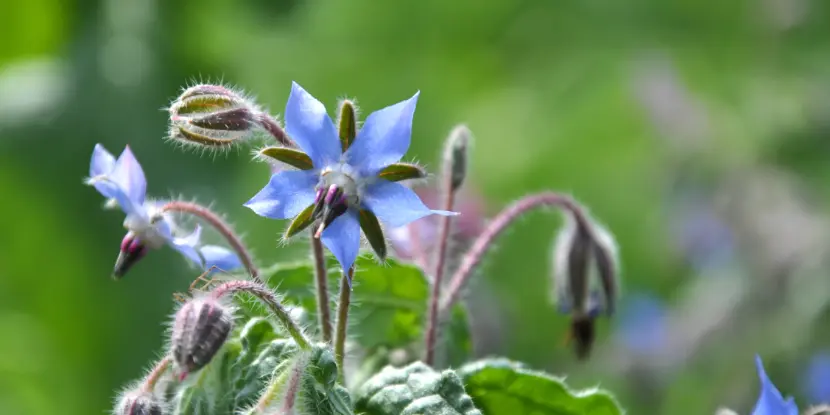
Borage repels strawberry pests and improves soil by adding trace minerals.
2. Marigolds
Marigolds are cheerful and easy to grow. They make ideal companion plants for strawberries and many other plants.
Marigolds as companion plants
- Repel pests like nematodes and aphids.
- Attract beneficial insects like ladybugs that feed on harmful pests.
- Deter rabbits from eating your strawberry plants.
- Suppress weeds by releasing natural herbicides.
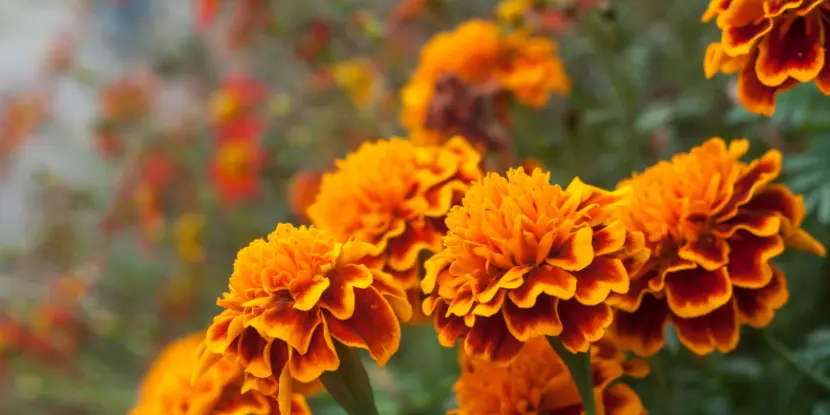
Marigolds attract beneficial insects and suppress weeds by releasing natural herbicides.
3. Nasturtiums
Nasturtiums are annual flowers that grow in red, orange, and yellow shades. The leaves and flowers are edible, with a slightly peppery taste reminiscent of watercress.
Nasturtiums as companion plants
- Repel pests like aphids, whiteflies, and squash bugs.
- A sacrificial plant that draws aphids away from strawberries.
- Attract pollinators like bees, butterflies, and hummingbirds.
- Improve soil quality by releasing nutrients when the plant decomposes at the end of the season.
- Edible leaves and flowers add a peppery flavor to salads.
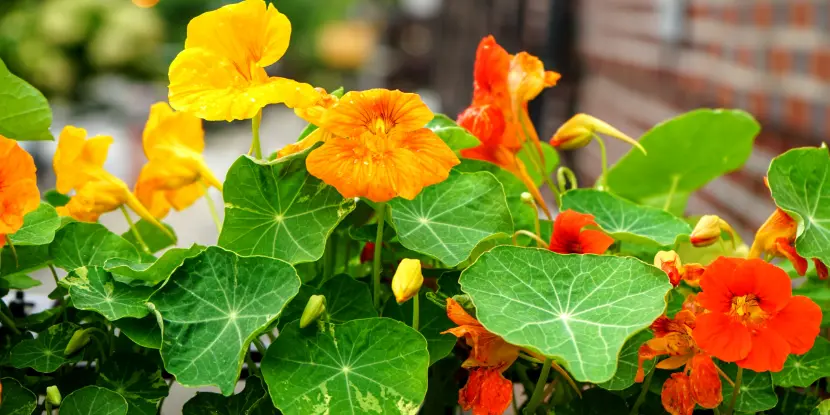
Nasturtium leaves, and flowers are edible, with a slightly peppery taste.
4. Dill
Dill is a hardy herb that contributes flavor to pickles, soups, and salads.
Dill as a companion plant
- Attracts beneficial insects like lacewings and ladybugs that feed on strawberry pests.
- Improves the flavor of strawberries when planted nearby.
- Enhances growth by providing shade in hot weather.
- Can also be grown in a container near strawberry plants.
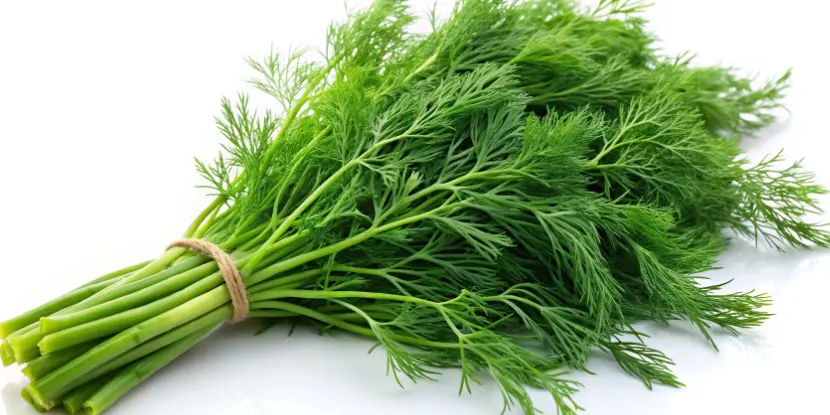
Improves the flavor and enhances growth by providing shade in hot weather.
5. Basil
Basil is an indispensable herb in Mediterranean cuisine. It thrives in Southern California’s warm weather and can be grown in containers, making it a portable companion plant.
Basil as a companion plant
- A natural insect repellent for strawberries.
- Attracts pollinators like bees and butterflies.
- Releases essential oils that enhance the growth and flavor of neighboring plants.
- Companion planting with basil can increase strawberry yield by up to 20%.
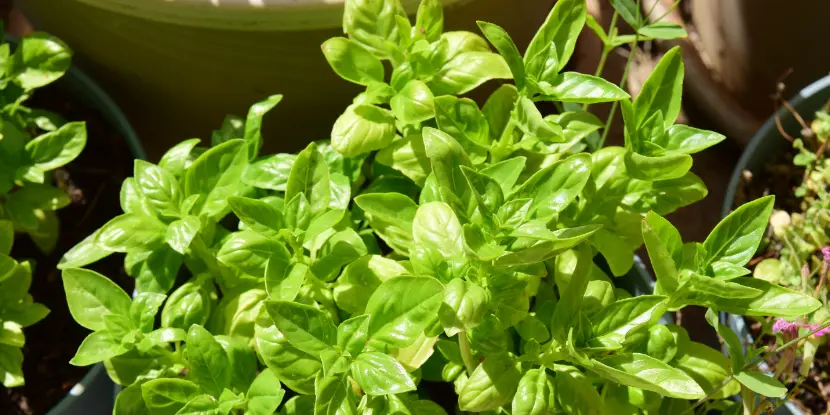
Basil thrives in Southern California’s warm weather and can be grown in containers, making it a portable companion plant.
6. Chives
Chives are members of the onion family. They have slender green leaves and purple flowers, and their mild onion flavor adds interest to soups, salads, and dips.
Chives as companion plants
- Repel pests like aphids, spider mites, and Japanese beetles.
- Attract beneficial insects that pollinate and protect strawberry plants.
- Can be grown as a border plant around beds of strawberries.
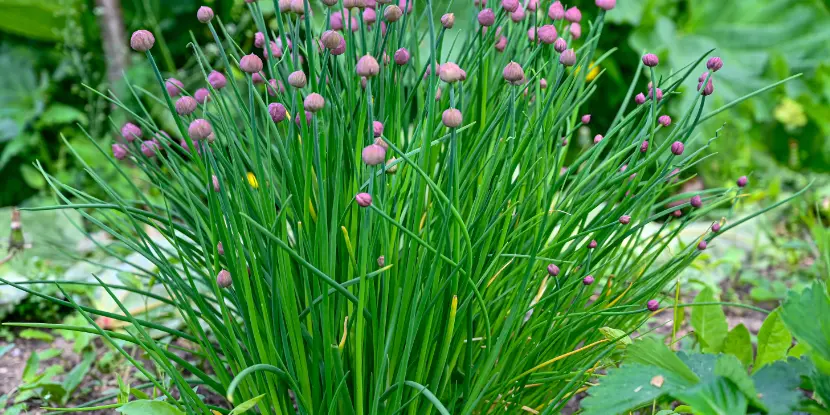
Chives can be grown as a border plant around beds of strawberries.
7. Garlic
Garlich has a strong scent that deters many garden pests. That same strong aroma and flavor can bring your Asian and Italian cuisine to life!
Garlic as a companion plant
- Repels aphids, slugs, snails, and other common pests.
- Improves the taste and yield of strawberries when planted nearby.
- Can also be used as a natural pesticide by crushing garlic cloves and soaking them in water to create a spray.
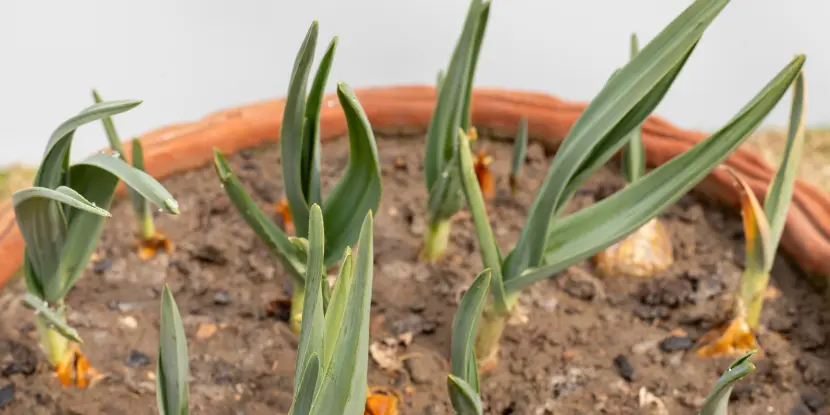
Aphids, slugs, and snails hate garlic almost as much as vampires do.
8. Thyme
Thyme is an aromatic herb that pairs well with meat, fish, soups, and stews.
Thyme as a companion plant
- Acts as a ground cover to reduce weeds and retain moisture.
- Deters pests like moths and caterpillars.
- Attracts beneficial insects like bees and butterflies.
- Improves the growth and flavor of strawberries when planted nearby.
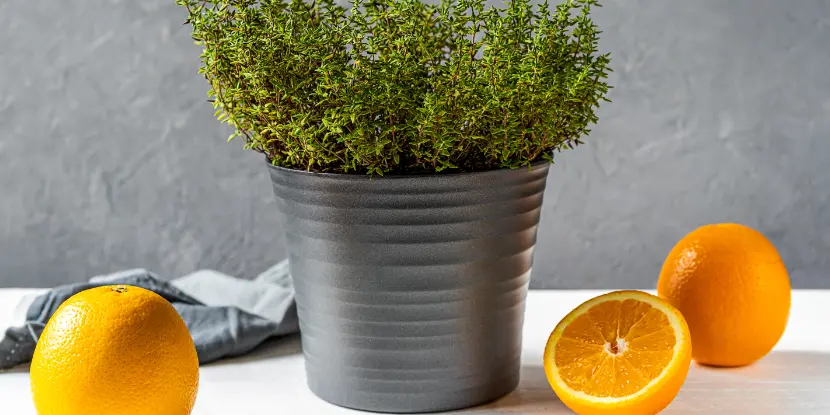
Thyme is a ground cover that reduces weeds while deterring pests like moths and caterpillars.
9. Oregano
Another popular culinary herb, oregano, has a robust flavor that complements pizza, pasta, and roasted vegetables.
Oregano as a companion plant
- Repels pests like ants and aphids.
- Attracts pollinators like bees and butterflies.
- Releases essential oils that enhance the growth and flavor of neighboring plants.
- Can be grown in containers near strawberry plants or used as a living mulch between rows.
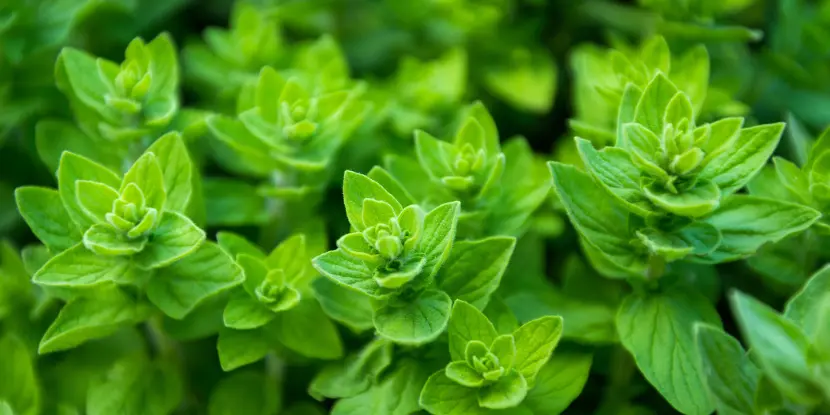
Oregano is a popular culinary herb that also pairs well with strawberries in the garden.
10. Spinach
Spinach is a leafy green vegetable packed with vitamins and minerals. Chances are you’ll grow it regardless of its companion benefits.
Spinach as a companion plant
- Thrives in similar growing conditions, having the same sunlight and water requirements.
- Shades the soil, keeping it cool and reducing water evaporation.
- Acts as a living mulch to suppress weeds and retain moisture.
- Attracts pollinators to increase strawberry yield.
- Can be grown in containers near strawberries.
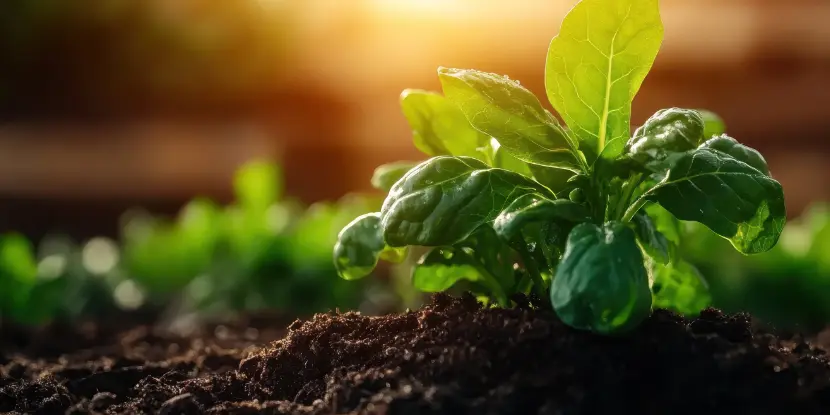
Strawberries love spinach almost as much as Popeye the Sailor.
11. Lettuce
Lettuce comes in many varieties, from butterhead to romaine to iceberg. Few home gardens are without this staple vegetable.
Lettuce as a companion plant
- Acts as a living mulch to suppress weeds and keep soil cool.
- Attracts beneficial insects like ladybugs and lacewings that feed on pests.
- Can be planted between rows of strawberries or grown in containers nearby.
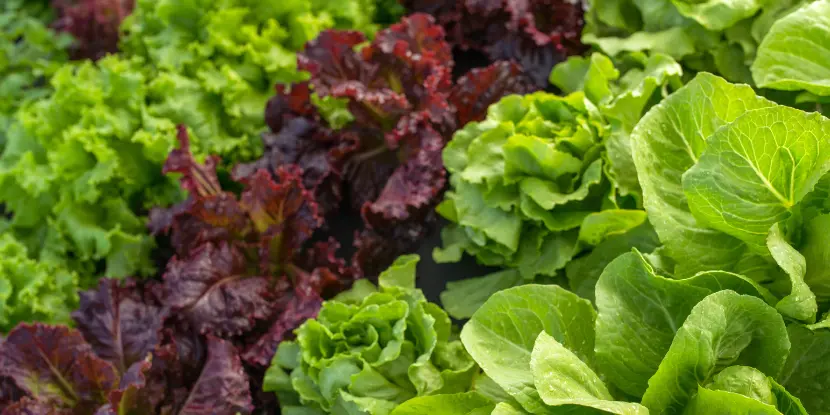
Lettuce can be planted between rows of strawberries or grown in containers nearby.
12. Onions
Onions are a staple in many dishes, from soups and stews to stir-fries and salads.
Onions as a companion plant
- Deter pests like aphids and spider mites.
- Attract pollinators like bees.
- Enhance the flavor of strawberries when planted nearby.
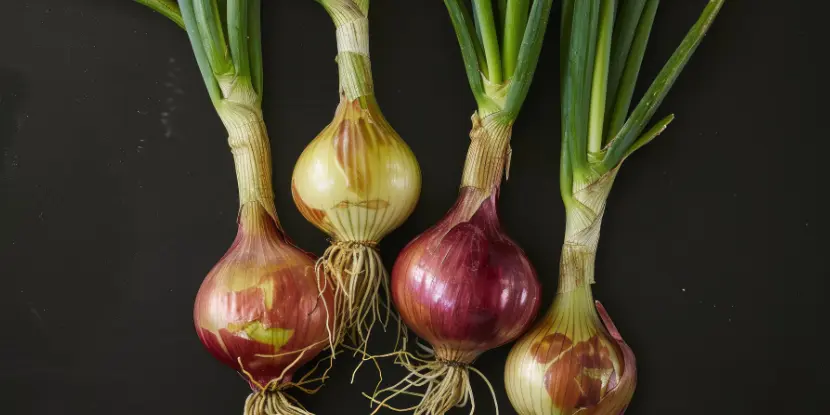
We hope you love onions! Your strawberries do.
13. Chamomile
Chamomile is an herb that promotes relaxation and digestion. Its beautiful daisy-like flowers attract pollinators.
Chamomile as a companion plant
- Deters pests like Japanese beetles and flies.
- Attracts pollinators like bees, butterflies, and hoverflies.
- Enhances the flavor of nearby plants, including strawberries.
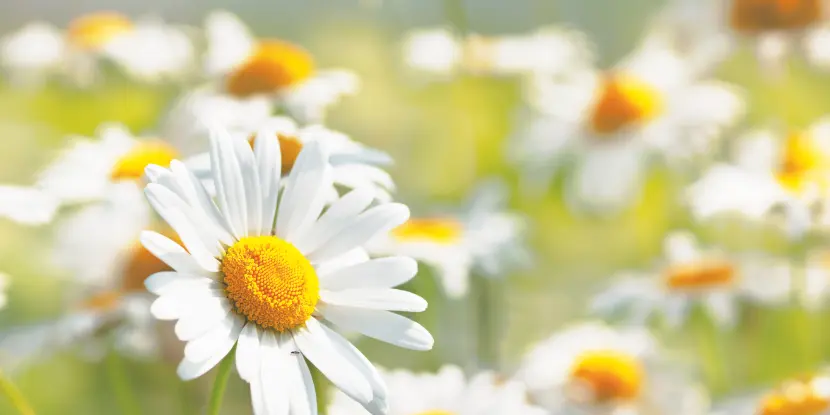
Chamomile promotes relaxation and digestion, and its beautiful daisy-like flowers attract pollinators.
14. Lavender
Lavender is a fragrant herb that beautifies a garden with purple flowers and silvery foliage.
Lavender as a companion plant
- Repels pests like moths, fleas, and whiteflies.
- Attracts beneficial insects like lacewings and ladybugs that feed on harmful pests.
- Enhances the growth and flavor of neighboring plants, including strawberries.
- Can also be used in homemade insect repellent sprays
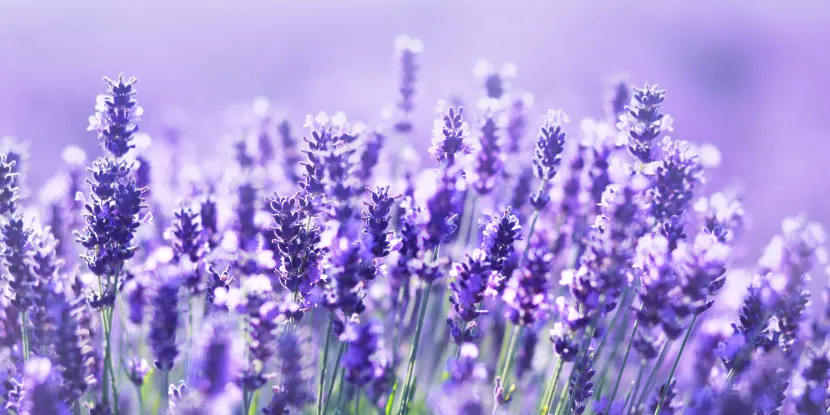
Lavender has a sweet fragrance you’ll love and pests will hate.
15. Pole Beans
Pole beans are a climbing vegetable that doesn’t compete for space with low-growing plants.
Pole beans as companion plants
- Provide shade for strawberries in hot weather.
- Enrich the soil with nitrogen, benefiting neighboring plants.
- Can be grown on trellises or poles near strawberry beds.
- Companion planting with pole beans can increase strawberry yield by up to 30%.
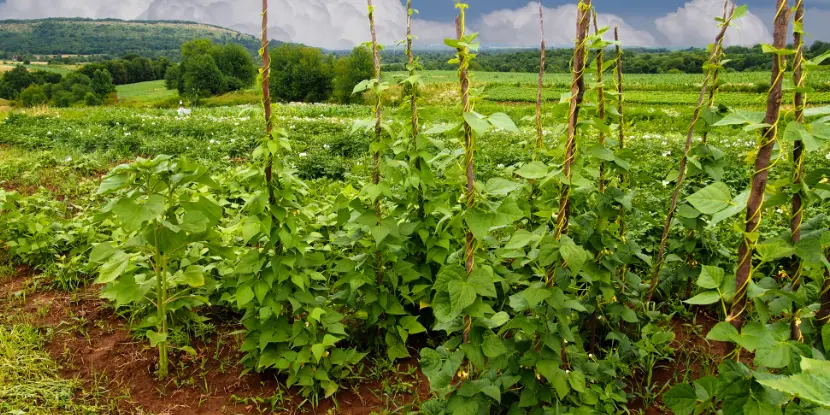
Pole beans enrich the soil with nitrogen, benefiting neighboring plants.
What Not to Plant with Strawberries
While the companion plants we list above can work wonders for your strawberries, not all plants make good neighbors.
- Avoid planting strawberries near brassicas (e.g., broccoli, kale, cabbage), which compete heavily for nutrients.
- Potatoes increase the risk of blight and can crowd out strawberries.
- Avoid planting strawberries near other plants susceptible to verticillium wilt, such as tomatoes and eggplants.
- Don’t plant strawberries near walnut trees, which produce a chemical that can be toxic to many plants, including strawberries.
How to Start with Companion Planting
- Plan your layout based on plant sizes. For example, tall companions like pole beans should go behind strawberries to avoid shading them.
- Rotate crops every year to prevent pests and soil disease from building up. Strawberries should move to a new bed every 3 years.
- Water wisely by grouping plants with similar hydration needs. Most strawberry-friendly companions prefer consistently moist soil.
- Strike a balance by planting just enough companions to support strawberries without overwhelming your garden patch.
FAQs: Strawberry Companion Plants
Q: Can I plant flowers with strawberries?
Yes! Flowers like borage, nasturtiums, and marigolds are beneficial companions that attract pollinators and repel insect pests.
Q: How close should I plant companions to strawberries?
Keep companion plants close enough to support strawberries without crowding them. Aim for 6–12 inches of spacing to allow air circulation and growth.
Q: Will companion planting improve the taste of strawberries?
Some companion plants, like borage and nasturtiums, can enhance soil health, improving strawberries’ flavor.
Q: Can I grow strawberries in containers with companion plants?
Choose compact companions like thyme, chives, or lettuce for container gardening. They’ll thrive alongside strawberries in pots.
Q: Do I need to fertilize strawberries when using companion plants?
It depends. If you plant nitrogen-fixers like beans or clover, they naturally enrich the soil. Otherwise, a balanced organic fertilizer can help.
Q: What’s the biggest benefit of companion planting for strawberries?
The most significant benefit is natural pest control. Companion plants like marigolds, onions, and garlic effectively ward off pests without chemicals.
Q: Can I combine several companion plants in the same patch?
Mixing multiple compatible companions can create a thriving, biodiverse garden while boosting the productivity of your strawberry patch.

